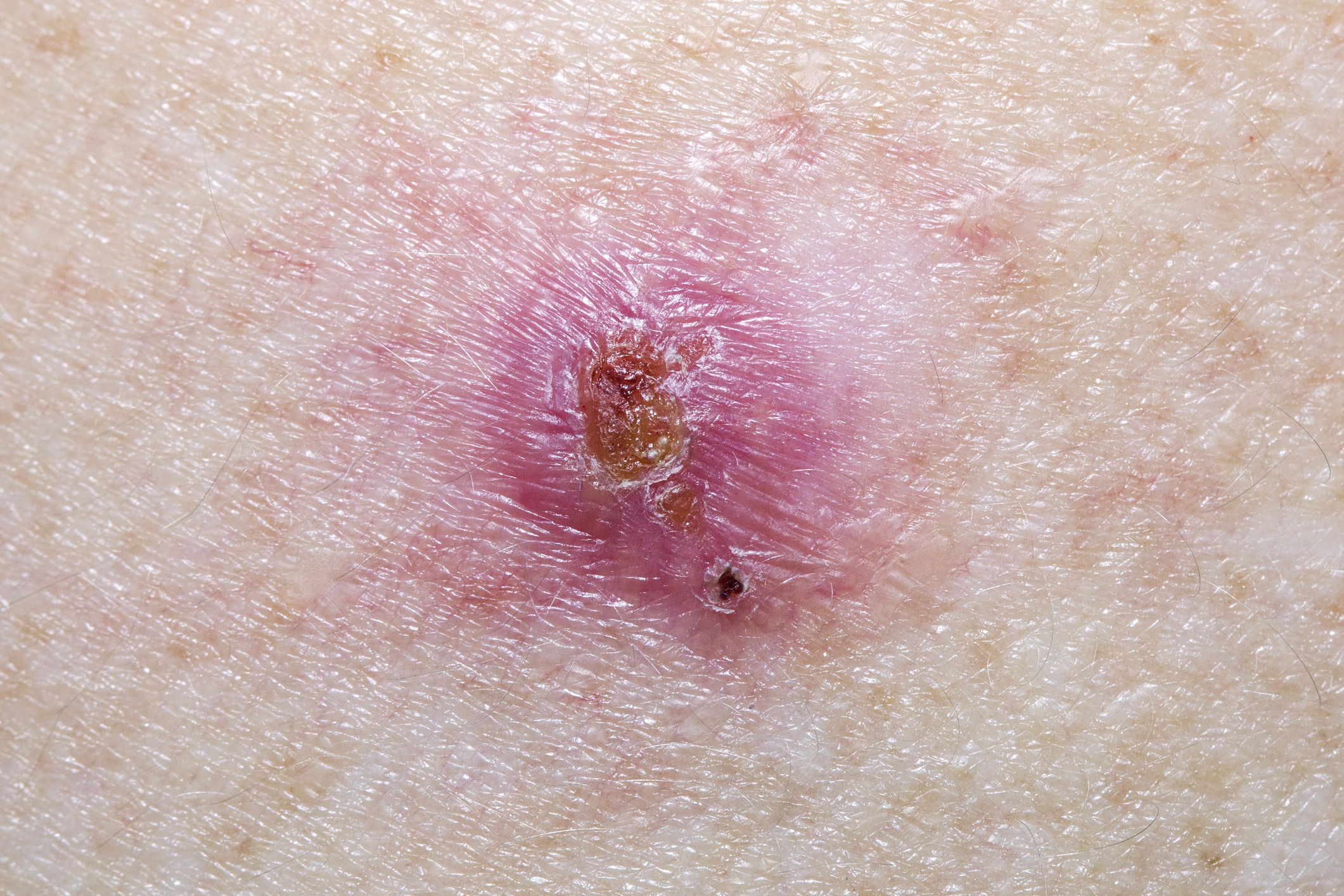Squamous Cell Carcinoma in Texas & Louisiana
At Sanova Dermatology, we pride ourselves on delivering top-tier skin care through a combination of experience, education, and advanced technology. Our team of highly experienced physicians are dedicated to providing treatment for squamous cell carcinoma. We have convenient locations across Texas, including Houston, Pflugerville, Austin, Bee Cave, and Dripping Springs. We also serve Louisiana with locations in Metairie, Old Metairie, Uptown New Orleans and Baton Rouge.
In its earliest stages, squamous cell carcinoma (SCC) is usually confined to the epidermis, the uppermost layer of the skin, and is referred to as squamous cell carcinoma in situ, or Bowen’s disease. With time, the skin cancer can invade through the epidermis and spread to the deeper layers of the skin. When this occurs, the tumor is referred to as an invasive SCC.
Who’s at Risk?
The risks for developing SCC are similar to other skin cancers. A light complexion with blond hair and blue eyes, skin that easily burns and doesn’t tan, and excessive and chronic sun and UV exposure all put you at increased risk. There are some additional risk factors for developing SCC. These include a suppressed immune system, exposure to certain chemicals like arsenic, previous radiation and X-ray treatments, and longstanding non-healing ulcers in the skin. Some believe that having warts or being exposed to the HPV virus can also increase the risk of SCC in certain areas of the body.

Most commonly, SCC appears as a scaly non-healing patch on the skin. It typically arises on those areas that get the most sun such as the face, backs of the hands and forearms. Often a precursor lesion known as an actinic keratosis is present before the SCC develops. With time, SCC can break down the skin causing a non-healing sore or even an ulcer in the skin. These skin cancers can bleed easily. And while they may be tender or itchy, most of the time they do not cause any discomfort at all.
In general, SCC causes local destruction and only breaks down the skin and tissues where it develops. However, approximately 2-6% of SCC can metastasize and spread inside the body. This is particularly true if the SCC develops in high risk locations, such as the lip, ear, genital area, or within scars. Also, if the skin cancer is larger than 2 cm, invades into the fatty layer under the skin, has a histology that is poorly differentiated when examined under the microscope, or is wrapped around nerves in the skin (perineural invasion), it has a greater chance of spreading. Finally, patients with suppressed immune systems, including those with organ transplants, blood cancers such as leukemia, HIV and/or AIDS, or patients taking medications that suppress their immune system are also at increased risk for having their skin cancer spread.
Treatment
If your dermatologist suspects that you have a SCC, the doctor will perform a biopsy to check the lesion under the microscope and confirm the diagnosis. In the early stages, SCC and its precursor lesion can sometimes be treated with a topical cream, blue light therapy, or even by scraping and burning the lesion on the skin (curettage and electrodesiccation). However, in the majority of cases, SCC is treated by having the spot surgically excised or with Mohs micrographic surgery.
Contact Us
If you would like more information, or if you would like to schedule a consultation with one of our experienced dermatologists, please click here.
